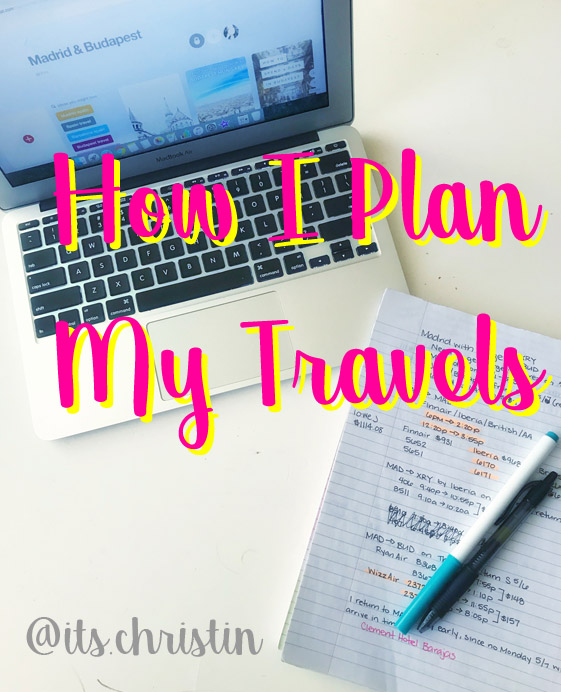How I Plan My Travels
I recently booked my next international trip!
For this trip, I’ll be traveling with a friend I’ve kind of traveled with in the past. I sent him a photo of my flight research (which I do for every trip) and he said “Damn, you broke that down Sunday football style.”
I’ve also received questions from friends asking where I get my ideas for my travel destinations and plans, so I thought I’d write a blog about my process in planning my travels!

Step 1: Figure out where you want to go.
Obviously! Haha… I typically use Pinterest or Instagram to get my travel inspirations. Sometimes it’s just a beautiful picture I see on Pinterest, and sometimes it’s a photo of a trip a friend is taking.
Once I have the destination chosen, I’ll do some research on the area and determine how long my trip will be (if I haven’t decided on the length already). I mostly do this on Pinterest.
Step 2: Commit!
As a budget traveler, I often book the cheapest, reasonable fare.
For airfare, booking a cheap fare often means purchasing non-refundable tickets. Because there’s no refund on those tickets; I’m committed! I have to go now!
Direct flights are usually most ideal, but sometimes flights with layovers are cheaper, and you can make the trip most adventuresome by spending a day or two in that layover city. I use Kayak’s “explore” function to see what season/months flights typically are cheaper, and then I’ll search using various flight apps to see if I can get an even better deal.
Skiplagged, Skyscanner and Momondo are apps I’ll browse through because sometimes you’ll find a hacker fare where booking a flight to a different destination and getting off at the layover is cheaper than direct flight. Maybe that’s another story for another post.
Because I’ve already done my research on activities in the area, I’ll have an idea for where I’ll want to book my lodging, be it AirBnB, hotel or hostel (depending on whether the trip is domestic or international, multiple nights or just a quick overnight). Once I determine the best location and price, I book my lodging.
I love using AirBnB because for the price of a hotel room, you can get an entire small apartment or studio, and because it’s a home, it’s usually more quiet and private than a hotel. Often, you’ll get to meet the host who, as a local, will have some pretty good advice on places to eat and little-known places to see.
Step 3: The Details.
Now that the big, important tasks are completed, I’ll spend the rest of the time determining on a high-level what I want to see and what I want to do.
My itineraries don’t go down to the hour, but I’ll have a list of places that I’ll definitely want to hit up while on vacation. I’ll map out the different “must do” places so I can determine what areas I’ll be spending time in.
For example, on a 3-day trip to one city, I might spend one day west of where I’m staying, one day east, and the third day north. If I get done with one day/area early, I might either spend the rest of the day relaxing, or I might start on the next day’s activities.
Doing this saves time and money as you’re not crossing the city or back-tracking. By knowing what “must do” things you are doing on each day, you’re able to fill in any time gaps with exploring or hitting up some “nice to do’s,” or even relaxing in a cafe, park, or if you were able to nail down a nice AirBnB with a view or balcony, head back there!
While I do have a list of “must see”, I typically try to be flexible in traveling. This results in less stress, where traveling is typically a bit stressful, especially being somewhere new.
To me, planning trips is almost as fun as actually being on the trip. Having the major points like travel, accommodations and major details figured out ahead of time takes the stress out early. Having the flexibility to take your time and relax between the major “to-dos” allows for a fun, easy-going time free from the stress of time-tables.
